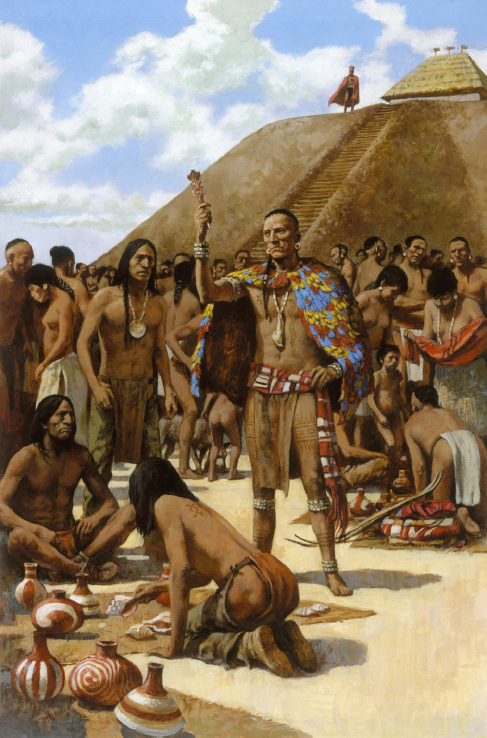Document 11-1: Moundville (ca. 1000–1450 C.E.)
An Artist Uses Archaeological Evidence to Imagine an Ancient City
The Mississippian cultures of North America shared much in common with the larger and better-

READING AND DISCUSSION QUESTIONS
- What evidence does the picture provide of social hierarchy? How did the people of Moundville display their status?
- What role does trade appear to have played in Moundville life? What evidence does the picture provide of labor specialization?
- What does the decision of Moundville’s people to build the massive pyramid in the center of the settlement tell you about their society? What must have been true about their society to make such an achievement possible?